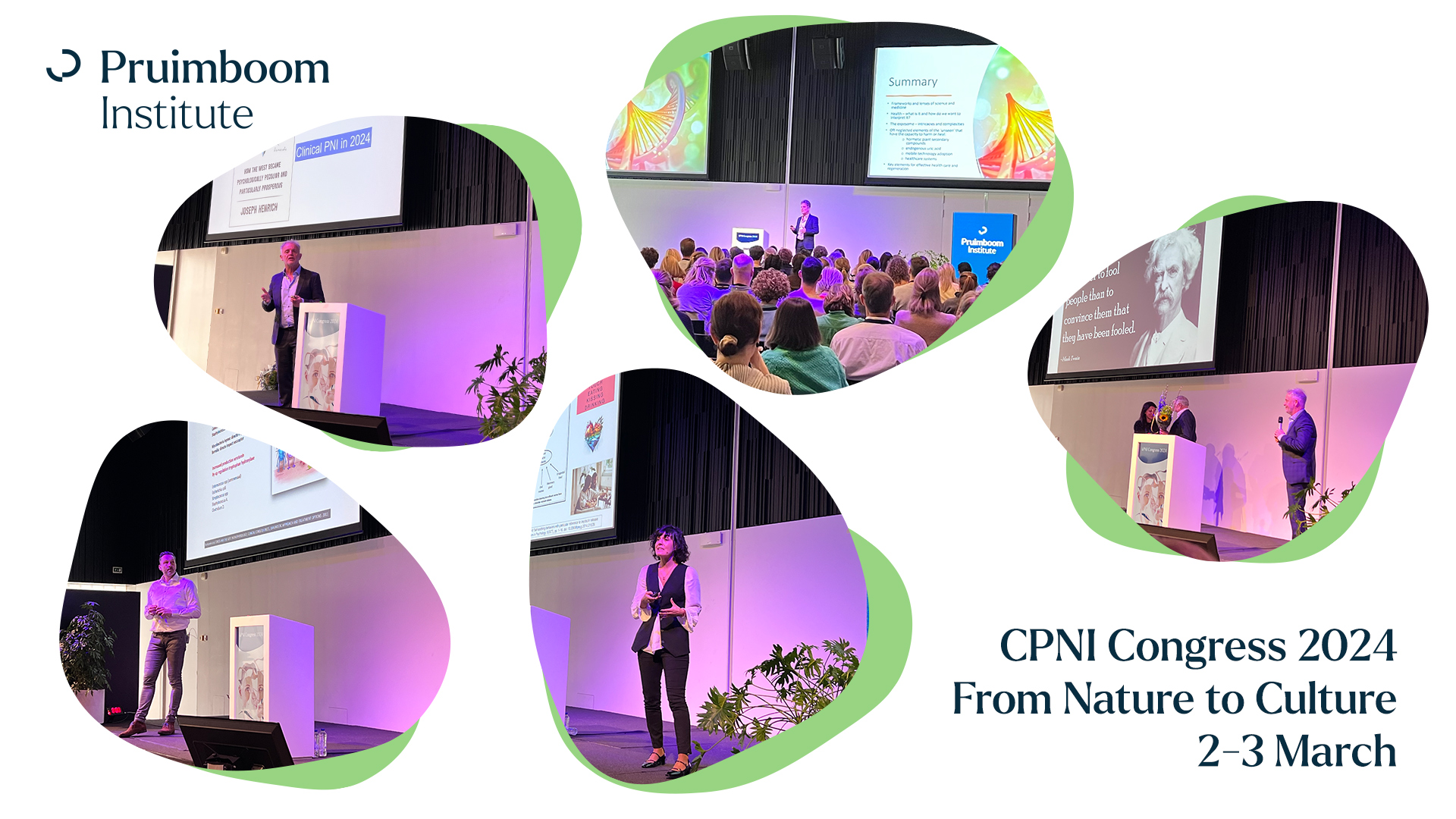Fecha:14 de marzo de 2024
Secciones de contenido
- ● Escuche el artículo
- ● Leer el artículo
- ● From Nature to Culture
- ● Superhighways of communication
- ● Powering the system
- ● Evolutionary (dis)advantages
- ● The solution for modern life?
- ● Interested in further Clinical Psychoneuroimmunology study?
By Meleni Aldridge, executive coordinator, ANH-Intl
Escuche el artículo
Leer el artículo
Ever wondered why, after a tough day, you want to open a bottle of wine and switch on Netflix?
I’m going to take you on a journey to Belgium to explain why…
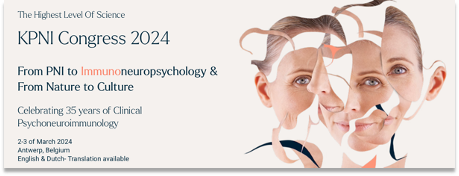
Clinical psychoneuroimmunology — CPNI or KPNI (k for klinisch) if you’re in continental Europe — has reached the ripe old age of 35 years this year. The brainchild of 2 visionaries Leo Pruimboom PhD and the late Bram van Dam PhD, CPNI is described as an advanced and complete medicine that provides an integrative overview of a person’s health. It particularly focuses on the interconnection between body systems and their relationship with the full gamut of psychological, social and ecological aspects involved in someone’s life.
Think of it this way…
We now understand that true robust and resilient health depends on the integrity of the communication between cells, molecules, organs and systems internally and with our external environment too. CPNI, with its deep roots in evolutionary biology, provides not only a language that enables this communication to be decoded and understood — but where the communication has failed, it then provides multi-mechanisms of repair that are fully aligned with our genetic blueprints. Methods that our bodies understand deeply at their core.
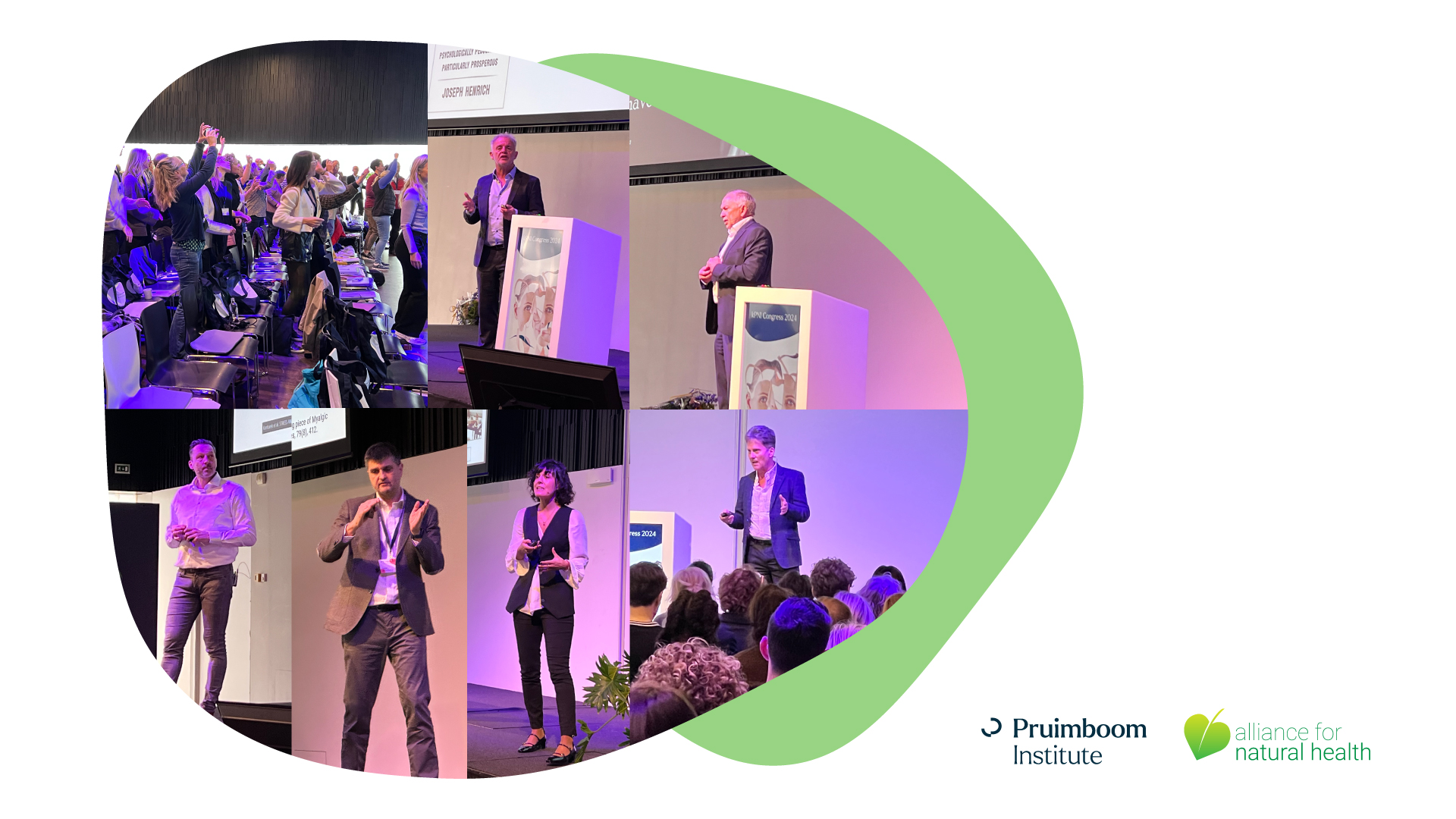
From Nature to Culture
The first weekend in March, I was among over 300 health professionals from as far afield as Brazil to gather in Antwerp, Belgium to celebrate 35 years of CPNI under the banner ‘From PNI to Immunoneuropsychology & from Nature to Culture'. The last section of the title hints at the catastrophic disconnection from nature that’s occurred as we’ve progressed through the so-called, developed and industrialised world of culture, creating a myriad of ensuing health impacts.
For me personally, having completed my post-graduate diploma in CPNI 11 years ago, it was wonderful to be embraced once more by so many likeminded peers and to soak up new learning from the faculty. Or perhaps it was just the fact that being together in a group, where I felt safe and supported, triggered my immune system to make more interferon gamma (INF-γ), an antiviral, pro-social immune molecule. INF-γ also activates the GABA-ergic neurons that are so calming, flooding you with inner peace. In this example alone you can understand why together we are not only happier, but stronger and more resistant to viruses. Lockdowns did the polar opposite.
What follows is my summary of key clinical pearls and top line points from selected speakers, many of whom are part of the CPNI faculty. My colleague, Rob Verkerk, was among the eight speakers. Suffice to say, it was an exciting couple of days, and I was on the edge of my seat for most of it.
Delegates at the CPNI conference in Antwerp, Belgium ‘walking-the-talk’ – breathing, dancing and singing it too! This was not a solely sedentary seated conference.
Superhighways of communication
As you might expect, the brain took a leading role right from the beginning. On its own merit, as well as part of the gut-brain-immune triad in the expanded stress response (the subject of Dr Pruimboom’s latest paper, “Psychoneuroimmunology in the daily clinic is only possible within a contextual frame”, currently ‘in press’, in a Nature Springer journal).
On the savannah of early human evolution, we weren’t the strongest or the fastest, but we were the ones that figured out how to survive, communicate and cooperate because of our larger brains and the way they’re wired. We still have those same brains today, albeit with a few modifications, like a smaller cranium, more densely packed neurons and a very active ‘4th layer’, containing a range of immune cytokines, that reside in the meninges (the 3 layers of membranes covering the brain and spinal cord). A salient reminder of how intertwined the communication is between the brain and the immune system.
Dr Pruimboom welcomed us all with the shocking news that this is the first time in human evolution we’re seeing a decrease in intelligence over the past two generations. This decrease in IQ and the subsequent reduction in the ability to learn new things also signals the end of our increase in life expectancy. This phenomenon he attributes to what, in evolutionary terms, has become monotony arising out of too much ‘culture’ (modern life), where we no longer have to stretch, reach and grow through effort and challenge to reach success.
For example, too many rarely remember what hunger really feels like as we can walk to the kitchen and reach into the fridge or walk to the corner store. We desire diversion from our inner thoughts, so we switch on Netflix. Instant entertainment. We feel a call for connection with others, so instead of going out and meeting people, we pick up our devices and start scrolling through social media. We have a need (or a perceived need!) for something new, so flick on the computer and purchase it online without even getting off the sofa. Our reward neuronal pathways are under-exercised and under-utilised.
Humans’ precious neurological pathways with their myriad connections have been a superhighway of communication that has seen us through evolution. But, in modern humans, these connections are now breaking down due to ‘monotonous living’, exacerbated by instant gratification. When you add loneliness, isolation and social defeat to the mix, you have even more potent risk factors for dying early than smoking, obesity or a sedentary lifestyle.
As Dr Pruimboom explained, if you cut off an octopus’ tentacle it regrows, but if it also has a fatty liver (metabolic dysfunction), it can’t. This is because our physiology is actually a super system, an intricate network of intense and constant communication. Everything is in communication with everything else. We have prevailed because of the massive inter-organ communication between the brain and the gut, in particular. Both systems sense the inner and outer world and together they decide how to respond.
Once you have a break in the network from something like metabolic disease for example, you have a disruption in the cellular communication pathway, which disrupts the normal function/response throughout the system. Hence, Dr Pruimboom offers, there’s no such thing as psychosomatic, as everything is everywhere at the same time.
Powering the system
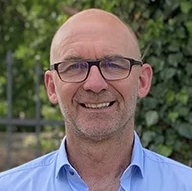
Of course, all this communication — system to system, organ to organ and cell to cell — comes with a requirement for energy. Tom Fox delivered a fascinating presentation on why our mitochondria are so much more than just energy factories. We are also dependent on them for cellular waste management, production of cofactors for hormone production, mitokine production, DNA release and cellular homeostasis. Mitochondria can also support the production of nucleotides (the building blocks of DNA), can make glucose and haem, as well as some fatty acids and even some amino acids. They support the production of systems that we need for all our cells, so it’s no surprise that mitochondrial dysfunction is at the root of all chronic metabolic and neurodegenerative diseases.
Tom also shared promising new research around two mitochondrial peptides — Humanin and MOTS-c (mitochondrial open reading pattern transcript c) which have profound impacts on health and longevity. Humanin has been found to be very low in Alzheimer’s sufferers for example, but centenarians have high levels. MOTS-c levels in younger people are higher, but decrease with age. Given that our mitochondria have their origins in bacterial ancestry and have been an essential element during evolution, it’s understandable that these peptides would be influenced by eating patterns. In fact, humanin is a caloric restriction mimic and levels of both are supported by intermittent and longer fasting. Remember, we’re built for famine and not for feast because successful evolution = survival.
Physical activity is still the best way to create more mitochondria and improve their function in a matter of days. Team this with intermittent fasting and you’ll create new mitochondria even faster. If your vitamin D levels are replete then many of the substances you need for optimal mitochondrial function will be available. You also need a healthy thyroid with sufficient thyroid hormones, particularly T2 and T3, which is another reason why so many people who are supplementing only with (synthetic) T4 are not able to reach optimal health levels. Red and infrared light supports the electron transport chain within the inner membrane of the mitochondria, having a direct effect on energy generation.
Evolutionary (dis)advantages

Professor Fritz Muskiet PhD delved into atherosclerosis as an inflammatory disease from an evolutionary biology perspective. Where high cholesterol was a benefit and protective against inflammation in our distant past, in the 1900s it turned from an advantage to a disadvantage with the advent of so much refined omega 6 oil in the diet. The more inflamed we get, the more our metabolism changes. The two are intimately intertwined, but not all inflammation is created by physical trauma. An unhealthy lifestyle – here we mean one that doesn’t speak to our genes in a language they understand – can be just as damaging. Such is the fallout from our modern life that, as practitioners, we now need to take into account LAMPs (lifestyle-associated molecular patterns), as well as PAMPs (pathogen-associated molecular patterns) and DAMPs (damage-associated molecular patterns).
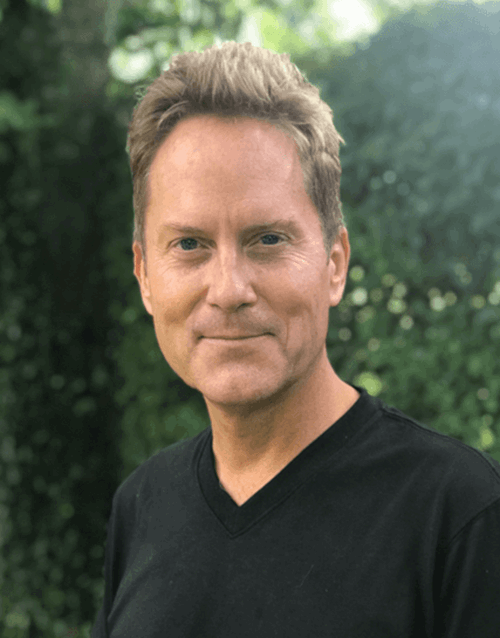
Both Doctor Rob Verkerk and Dr Muskiet referred to uric acid given the starring role its now playing in metabolic dysfunction and chronic disease. Uric acid is a by-product of fructose metabolism. Our fruit today has grown in size and turned into water-filled sugar bombs which we eat out of season after they’ve been chemically ripened with ethylene. The fruit that our hunter-gatherer ancestors ate was much smaller, more nutrient dense with all the healthful secondary plant nutrients we so need, ripe and in season. When a fruit ripens on the plant in the sunshine, the fructose turns to glucose, which is why we have six different systems in the body to deal with glucose, but only one (the liver) to deal with fructose. We are not nourished properly by many of the the insufficiently nutrient dense fruits we consume today, but the additional uric acid from their breakdown contributes to higher uric acid levels, which affects the mitochondria, lowering energy production, driving hunger and desire for more sugary fruit as the body craves glucose, but all it gets is more fructose. And the vicious cycle continues.
But as Rob Verkerk also said, uric acid at low levels is incredibly protective, doing around 50% of the free radical scavenging work in our bodies. Around 15-20 million years ago when climates got colder and food was harder to find, our hominid ancestors lost the ability to break uric acid down following a mutation. This gave us a survival advantage during these thrifty times as it upregulated insulin our fat storage hormone. But in today’s world, with high fructose and loads of caffeine, this mutation is driving uric acid levels through the roof, in turn contributing to our epidemics of metabolic disease, heart disease and even cancer.
In fact, hormesis was the subject that Rob Verkerk majored on, showing how many things to which we’re exposed have a non-linear dose-response relationship. And we really need to understand the twists and turns of these dose-response relationships if we’re going to help people heal. Hormesis is a scientific term that says it’s not as simple as saying there’s a straight line relationship between a given exposure and its benefit or harm. In fact, more often than not, that relationship is really complex, and sometimes a little of something can be more harmful than moderate amounts of it, as we find with so-called xenoestrogens in water supplies contaminated with BPA-containing plastics and contraceptive pill wastes. But lo and behold, we also see these hormetic relationships with uric acid, where people who don’t get enough of it, like Alzheimer’s or Parkinsons patients, who lack the neurological protection it offers, and those who have too much suffer the consequences I mentioned above.
Rob also showed how these hormetic relationships can apply to things that weren’t chemicals at all, describing the pros and cons of too much or too little cell phone and health system exposure. Both can save, both can kill, and so many of the problems we face in modern society are linked to us not appreciating the extent to which these widely accepted technological systems impact our lives, all too often negatively, because we don’t calibrate their use sufficiently carefully.
>>> Ácido úrico: el metabolito que no puede ignorar
Professor Charles Raison MD went straight to the heart of what’s ailing so many when he referenced the rising rates of drug dependence, anxiety, depression and suicide – especially in young people.

“Our world is now depressogenic, anxiogenic and we have so many things that are suppressing our natural homeostasis. The longer you take medication, the longer you’re likely to get resistant to them. They may also set people up to have a more chronic course of depression. We have a major problem and psychiatry, as a field of medicine, is scientifically bankrupt.” – Dr Charles Raison
Dr Raison acknowledged that antidepressants don’t work very well, with barely any benefit above placebo. From an evolutionary perspective, antidepressants may help some people take it easy, to rest, relax and have a sense of safety. However, working with polyvagal theory is likely to do just as well. But why are we seeing such an epidemic of depression and mental health woes?
The Generalised Unsafety Theory of Stress – GUTS — and not achieving proximal goals may be two contributors. Humans evolved to be in relationship with others and when we’re not, our internal safety signals are not forthcoming. These safety signals are an evolutionary mandate that allowed humans to eat, sleep and procreate in peace, yet there are many people who have not grown up in, or live in, safe environments and so haven’t developed the right safety signals.
Proximal goals refer to key survival parameters for a species like having sufficient food, being sexually attractive, achieving status in one’s community and being regarded well by others, adequate shelter and a safe space to live. In our evolutionary history, if you achieved these goals, on average, you were more likely to survive and reproduce. Depression is a signalling function that tells you that you’re failing at these proximal goals because the evolutionary prod from our genes is to achieve them, to ensure you’re successful in surviving and reproducing.
Whilst, in this new world of ‘culture’, we aren’t often without food or shelter, we do lack sufficient challenge in our often monotonous world. Think of heat and cold for example, and how we all so often live in artificially controlled temperatures in almost hermetically sealed environments. There is a very close relationship between our ability to thermoregulate and the brain. People with major depression usually run hot and have problems with thermogenic cooling. From an adaptive stress-based perspective, it’s better to stress the cooling system by further heat so that the body can reset itself. Studies have shown that the hotter people were, the more undepressed they were after hyperthermia treatment. Using adaptive stressors sets off a compensatory ‘overshoot’. Fasting works like this too. Just enough to create a reset but not too much to take one into damaging survival stress.
In a similar fashion, having a deep spiritual connection can be like an emotional breakthrough that allows you to feel that the Universe is a safe and welcoming place. Mystical experiences can be pretty powerful antidepressants, which is why we’re seeing such an explosion of plant medicine practices, microdosing and the use of psychedelics in clinical practice for major depression. Psychedelics like Psilocybin allow someone to face their problems and either accept them or fix them through seeing how to make change. In Dr Raison’s clinical experience, the more of an emotional breakthrough a patient had during a Psilocybin session, the more undepressed they were 12 weeks later. It becomes a short cut to reaching proximal goals.

Dr Raison’s presentation was the perfect scene-setting for what was to come on day 2 from Itziar Hernandez MSc, who tackled the causes of the opioid crisis head on. In a nutshell, opioids filter the environment around us and make life easier for people who are feeling overwhelmed. They’re used for physical pain because they’re so effective — but they’re also used to dull emotional pain. Around half the number of prescriptions written, are for people with depression and anxiety. Opioids are heavily addictive because the loss of control to the substance is pharmacologically fast anyway, but even faster when there is stress or pain present.
There’s a group of people who are more susceptible to opioid addiction — those who have reward deficiency syndrome. What is reward deficiency syndrome (RDS), I hear you ask? Well, consider that we are primed for successful survival as an evolutionary trait. The benefit from the reward pathways in our brain was that we would search harder and try harder to survive. They prevent us from giving up. But now in today’s world, we have an evolutionary mismatch. We are bombarded by constant sensory information overload from things that give continuous, instant, rewards that we don’t work for. As I’ve mentioned previously, online shopping, eating, doom scrolling… We don’t learn anything new, we don’t create new synapses, we don’t make new connections with people face-to-face, so the people that are sensitive to RDS are more unable to deal with the overwhelm and more susceptible to feeling pain, mental health imbalance — and are more susceptible to addiction too. Not just to opioids, but to anything just to feel better, sugar, overeating, gambling, sex, alcohol etc.
Itziar reminded us that we have a huge number of people today with this evolutionary trait who lose the battle with pain, who lose control over their emotions and choose instead synthetic opioids to feel better. Even one pill of fentanyl can create addiction in people like this. Fentanyl is now the leading cause of death in 18 to 49-year-olds in the US. Just one pill can kill!
Our bodies release opioid peptides naturally during the stress response, but we become resistant to them after they’ve taken the edge off the stress because we were meant to get off our butts and go find a solution. Too many are far too sedentary today, lacking any drive and motivation to go out looking for solutions — or just being active — because, as a population, we’re too conditioned to look for solutions digitally. Nature tells us that the more inactive you are after a period of stress, the more resistant you will be to your own internal opioids. If you stay on the couch feeling your woes, the risk of descending into depression becomes all the more real. We have it inbuilt in us that to find solutions we need to move. Even going for a walk will support this process.
However, having chronic stress and becoming resistant to opioids is not just in the brain. It’s also in our body. We have to end a challenge to activate morphine and oxytocin. Pills alone will never fix the evolutionary problem. The solution is within us. We have to activate these pathways ourselves.
To activate the morphine system, we need trust, love, belief in ourselves, relaxation, reflection, and time to meditate. In addition, touch and massage because certain fibres in our skins will stimulate our piloneural complex which releases oxytocin. This system is so important, it’s already developed by week 12 in the womb. It’s also this system that programmes our capacity to regulate our responses to life — from the beginning to the day we die.
Oxytocin is also very important to programming our precision neurons that predicts our experiences in life depending on our context as children. Or that allow us to change these as adults when we can see where healing needs to take place. The lenses that we use to see life — as perfectionists, people with poor self-esteem or lacking in self-love, for example, are all in this system, which is why touch is so important for our health and wellbeing.

Martijn Van Raamsdonk continued to fill in the gaps as to why we are also dealing with an epidemic of chronic pain in his presentation entitled: “Chronic pain – maybe the real danger comes from within?”
We’re seeing chronic pain figures escalating exponentially. Currently 1 in 4 people suffer chronic pain, but by 2050, it’s slated to be 1 in 3. It’s clear that we can’t cure chronic pain with conventional approaches, or we would be seeing these numbers reducing.
Martijn also hit us with a counter-intuitive hypothesis at the beginning of his presentation: that pain is 100% an illusion! You could almost hear the room take a breath in unison. That’s some claim — especially if you’re someone experiencing pain. The clue is in the word experiencing. Let me elaborate.
Pain offers an evolutionary advantage because it allows you to sense danger. We are created for survival, so being able to sense danger is helpful so we can move away from it. Pain is effectively a message that demands attention and prioritises escape, recovery, healing and learning. But what is it, where does it originate and is there a direct cause and effect relationship with the site of the pain we are feeling? With a wound, clearly yes. But in the case of chronic pain, it’s not so linear.
Given that we are an organism of connection and communication, with everything connected to everything, where the pain is actually felt, or perceived, may not necessarily reflect its origin or cause. For instance, a fatty liver with dysfunctional insulin receptors may well be sending SOS signals that are perceived as pain somewhere else in the body.
Nociceptors that initiate the sensation of pain are neuro-immune cells, so it’s important to understand that peripheral sensation is created more by the immune system. Think of it as senso-immunology. Did you know that the dorsal root ganglia in your spine can also pick up signals from the body? A and C nerve fibres are spontaneously activated by low grade inflammation, so you are primed for pain the minute your inflammation levels rise be it from poor dietary choices, a sedentary life or a disordered and imbalanced microbiome.
In fact, we can never detach the brain from the microbiome, such is our dependence on the symbiotic relationship with our microbial partners. Our microbiome produces so many of our neurotransmitters and precursors for those produced in the brain. If our dopamine levels fall, then we are more sensitised to feeling pain. Hence a first port of call for chronic pain sufferers is to work with the gut. To re-establish a healthy, non-permeable gut barrier to stop the very toxic lipopolysaccharides (LPS) from gram negative bacteria seeping into the body cavity and creating inflammation and the right microbial balance. This is one of the key links between endotoxaemia (toxicity produced within the gut from bad bacteria), LPS and chronic pain.
Hence, the CPNI (or KPNI if you’re in Europe) approach to chronic pain is to restore balance and homeostasis in the whole organism.
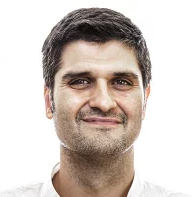
Daniel de la Serna summed this up beautifully in his presentation on chronic fatigue syndrome (CFS) and why it’s an immune-psycho-neurological condition. When we lose homeostasis, we rely on our allostatic systems to take over. The term allostasis refers to the adaptive process the body produces to try and maintain balance when it’s been lost — think fight, flight or freeze mechanism using adrenalin, cortisol and other chemical messengers.
There are two important risk factors for developing CFS — psychosocial and infectious triggers — that speak to the connection between the brain and the immune system. The brain being responsible for adaptation and very sensitive to psycho-social triggers; the same for the immune system that is very sensitive to pathogens. Here again we see the importance of the 4th layer in the brain where immune cytokines and immunity have an impact on our social neurology.
Whilst we see CFS as a negative pathology, in survival terms, feeling so tired that we avoid the risk involved in contact with others is an advantage for those people who may be suffering so much dysregulation from broken communication that it’s the only way the body can cope. For example, social defeat induces depressive-like states that are so powerful in the brain that they induce immune triggers in the brain (microglial activation) but without a full immune response in the body. Long term, this causes neuroinflammation, a precursor to neurodegenerative diseases like Alzheimer’s Disease, dementia or Parkinson’s Disease. When our stress, whether it affects the brain or body, goes from acute to chronic, we slow down, as a bid for survival. Our evolutionary drive to survive is still so deeply hardwired into our DNA that we’ll create all manner of pathologies to ensure we just keep going (Ed. a concept that reminds me of Dory in the Disney film Finding Nemo).
The solution for modern life?

“Disease starts when things become monotonous and disconnection occurs.”- Doctor Leo Pruimboom
Communication in our body’s superhighway is so much more than just hormones or nerves. Microbiology, nanobiology and even our biofield is how everything is connected. The answer to recovering our lost communication pathways lies in assessing where the communication breakdowns are and restoring connection using the time-honoured evolutionary ‘language’ that our bodies understand so well.
The ‘Intermittent Living’ concept, as Dr Pruimboom calls it. One of the key drivers for why he co-founded the health approach, clinical psychoneuroimmunology, 35 years ago and latterly has developed a 6-day programme, called ‘Intermittent Living’, rooted in re-establishing evolutionary communication pathways using natural adaptive stressors.
Interested in further Clinical Psychoneuroimmunology study?
The Masters in CPNI is being taught in English for the first time, starting in October 2024, in London.
Read more about the International Masters in CPNI.
Join Dr Leo Pruimboom for a second Masterclass in London on 1st June 2024, exploring Inflammation as the cause of all disease and how to resolve it. Can we use natural anti-inflammatories or are they as harmful as NSAIDs?
Don’t miss out on Dr Pruimboom’s first Masterclass with Rob Verkerk PhD on 17th November 2023 as the recording is now available. Whether you’re new to CPNI, wanting to refresh your knowledge or add more skills to your practitioner toolkit, you’ll find this to be full of information and take away clinical pearls – particularly if you’re considering enrolling on the Masters programme.
To find out more, or to have any questions answered in person, about the Masters or any of Dr Pruimboom’s Masterclasses in the UK, please contact Karina Athwal via [email protected].

>>> Si aún no se ha suscrito al boletín semanal de ANH Internacional, hágalo ahora de forma gratuita mediante el botón SUSCRIBIRSE situado en la parte superior de nuestra página web - o mejor aún - hágase miembro de Pathfinder y únase a la tribu ANH-Intl para disfrutar de ventajas exclusivas para nuestros miembros.
>> Siéntase libre de volver a publicar - sólo tiene que seguir nuestras Directrices de Re-publicación de la Alianza para la Salud Natural Internacional
>>> Volver a la página de inicio de ANH Internacional
